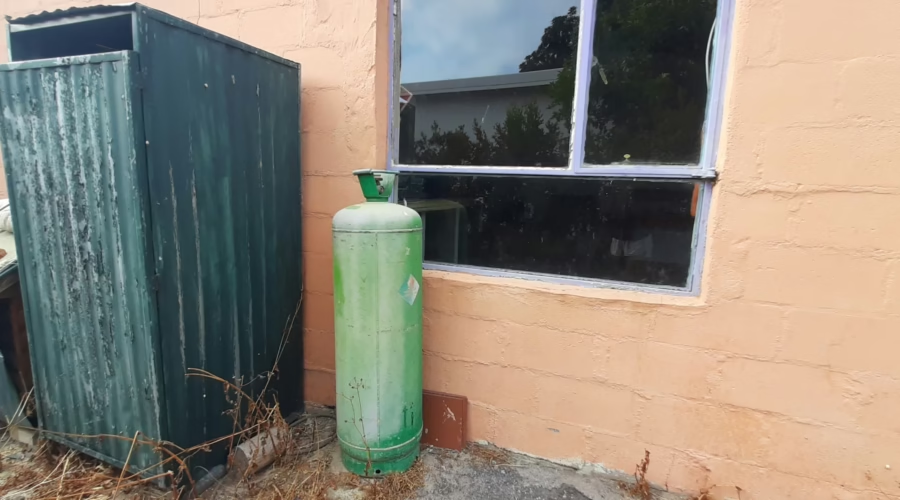A Recipe for Disaster – Unsafe Gas Installation Puts Lives at Risk
Introduction
A loose-standing gas bottle positioned outside a kitchen window for supplying gas to a stove may seem like a simple solution for cooking. However, this arrangement raises serious safety concerns that could lead to fires, explosions, or other catastrophic incidents. This image highlights a clear disregard for proper gas installation protocols, putting occupants and neighboring properties at significant risk.
The Issue: Improper Gas Installation
- Loose Standing Gas Bottle
- The gas bottle is not securely mounted or enclosed, leaving it vulnerable to tipping, tampering, or exposure to external elements like extreme heat or rain.
- Proximity to the kitchen window poses a heightened risk of ignition in case of a gas leak, as the kitchen is often a source of open flames or sparks.
- Non-Compliant Installation
- The lack of proper piping or safety mechanisms suggests the installation does not comply with South African National Standards (SANS) for gas systems.
Legal Requirements for Gas Installations
In South Africa, gas installations are governed by strict regulations to ensure safety:
- SANS 10087 – The Handling, Storage, and Distribution of Liquefied Petroleum Gas (LPG)
- Gas bottles must be stored in a safe, well-ventilated, and secure area, away from windows, doors, or potential ignition sources.
- Bottles should be housed in an approved structure or securely fastened to prevent accidental tipping.
- Pressure Equipment Regulations (2009) under the Occupational Health and Safety Act (1993)
- Mandates that all gas systems must be installed by a licensed technician and include safety features to prevent leaks and accidents.
- Rental Housing Act (1999)
- Landlords are required to provide tenants with safe and functional utilities, including gas connections.
The Dangers of Non-Compliant Gas Installations
Improper handling and installation of gas systems can lead to:
- Gas Leaks: A loose connection or damaged cylinder can release flammable gas into the air, creating an invisible and highly dangerous hazard.
- Explosions: Accumulated gas near an ignition source can cause catastrophic explosions, endangering lives and property.
- Fires: A spark from the kitchen or static electricity near a leaking gas bottle can ignite flames.
Responsibilities of Landlords and Municipalities
- Landlords:
- Ensure all gas installations are compliant with SANS and Pressure Equipment Regulations.
- Regularly inspect and maintain gas systems to prevent hazards.
- Municipal Authorities:
- Inspect properties for compliance during routine checks or when complaints are raised.
- Enforce safety standards by issuing fines or requiring remedial actions for non-compliant properties.
What Occupants Can Do
- Report the Issue:
- File a complaint with the local municipality or the Department of Labour under the Occupational Health and Safety Act (1993).
- Highlight the non-compliance to the relevant Gas Regulatory Authority.
- Seek Legal Recourse:
- Pursue a claim through the housing tribunal if the landlord refuses to address the issue.
- Ensure Safety:
- Avoid using the gas system until it is repaired or certified safe by a licensed technician.
Conclusion
A loose-standing gas bottle outside a kitchen window is more than a minor oversight—it is a serious safety hazard that could result in loss of life and property. Proper gas installation is not just a legal requirement; it is a critical aspect of maintaining a safe living environment.
It is essential for landlords and municipal authorities to take immediate action to rectify such issues. Tenants have the right to a safe home, and gas safety should never be compromised.
Legal Context for the Right to Publish
This article is published under Section 16 of the Constitution of South Africa (1996), which protects the right to freedom of expression and information sharing. It is further supported by the Promotion of Access to Information Act (2000) and the Open Justice Principle, which emphasize accountability and the public’s right to safety and transparency.


